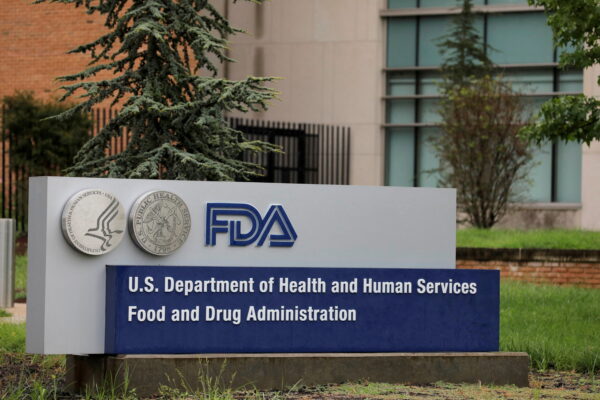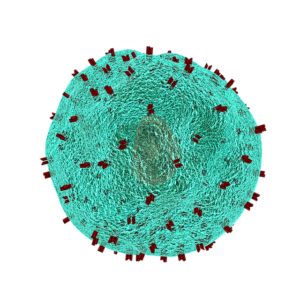Cancer is the second leading cause of death in the United States, right on the heels of heart disease.
In developed countries, the general consensus is that if you do not die of heart disease, then the next likely event is cancer.
In fact, most health experts expect that everyone will eventually develop, and likely die of cancer or a related complication—provided nothing else happens before then.
As a condition that is bound to haunt a significant proportion of the population, we have also been researching cures for it for hundreds of years.
So far, the earliest documented cases of cancer were made over 3,500 years ago. The first causes of cancer and anti-cancer therapy were also found over 200 years ago.
However, over 200 years later, exactly how effective are our drugs?

Effectiveness of Drugs
From 1991 to 2019, mortality rates from cancer fell by 32% as survival rates increased.
Drug regulatory agencies may drive the idea that these rates are dropping due to the approved pharmaceuticals on the market, yet studies suggest that we have to thank early prevention, detection, and improved cancer care organizations for increased survivability.
It should be noted that early prevention, detection, and other methods are also not perfect, and can also cause overdiagnosis and overtreatment. Some cancers progress slowly, and therefore increase the numbers on survivability.
In that case, how effective are cancer drugs?
A study evaluating 85 cancer drugs approved from 2006 to 2018 based on their response rate (RR)—how well the patient’s tumors respond to the drug—found the median RR was 41%. This meant that, at the median, only 41% of patients’ tumors responded to the drug. Breaking the results down, of these 85 approved drugs, 14 (16%) had an RR less than 20% and almost half (47%) had an RR less than 40%.
However, another study evaluating the 207 anti-cancer drugs approved between May 2016 to May 2021, found that 14% of these novel drugs displaced approved drugs used in standard first-line of car, meaning drugs that these newer drugs replaced previous standard lines of treatment.
The majority of the novel treatments were made as add-on treatments complementary to the main treatment(29%) or as alternatives (42%) if the initial treatment doesn’t work. This indicates that most novel cancer drugs are complementary, rather than a treatment that overturns the standard regime. Though some complementary treatments are beneficial, they also generate more cost for patients.
Further, studies on newly-launched cancer drugs suggest that, though newer drugs may have greater clinical benefits, they are also more toxic.
Newly-approved drugs are either novel (new molecules or new pathways) or a generic version of a previously branded or patented product.
The majority of drugs approved by the FDA are generic drugs. In 2021, the FDA gave 776 full or tentative approvals to generic applications (pdf) and approved 50 novel drugs.
However, researchers say physicians generally recommend to patients that newly-released generic drugs should not be used within the first five to seven years of release unless the new drug is a breakthrough: a drug that treats a serious or life-threatening disease or condition.
This is because generic drugs—which make up most of the newly-approved drugs—are not tested for safety, only for bio-similarity to the branded drug already on the market: such as the absorbance rates, the concentration of the active compound, and so on.
Generally these drugs are just as safe as the branded version, and are also significantly cheaper.
However, considering that more than 80% of the United States’ pharmaceutical active ingredients are manufactured in developed countries, including India and China, where regulation of pharmaceuticals is less stringent; this puts drugs at risk of tampering and contamination.
The Food and Drug Administration (FDA) has previously banned generic medications manufactured at several Indian sites.
In contrast, novel drugs will generally go through a more stringent approval process; tested for safety and efficacy as part of the approval process.
Nonetheless, many studies have found that novel drugs are usually more effective, yet they are also more likely to be toxic.
A 2012 study found that novel drugs often come with increased risk of morbidity and toxic death. The authors speculated that clinical trials for drugs often enroll patients with good performance status and few comorbidities, and these trials would inevitably show lower toxicity results and improved efficacy in healthier patients.
However, in reality, drugs may often be prescribed to cancer patients with weaker constitutions, and studies have shown direct evidence that toxicity in clinical trials underpredicts real-life toxicity.
Transparency, Data Protection, and Intellectual Property
Many research and media reports blame the lack of transparency, undisclosed clinical data as a endemic sickness the oncology drug industry and for the entire drug industry in general.
In many cases, it is true: only a small number of people have the data and it can even be difficult for insiders to access critical clinical data.
However, apart from transparency, there is exists a delicate balance between data transparency, compliance to data protection laws, and the need to protect intellectual property has made full disclosure of clinical data trials difficult.
In 2007, the Food and Drug Administration Amendments Act of 2007 (FDAAA) gave the FDA more power to require manufacturers to conduct post-approval studies by imposing monetary penalties if noncompliant. It also required information on the design of all clinical trials, as well as a summary of the results—to be made public on ClinicalTrials.gov 12 months after study completion, among other changes. However, much of the patients’ data from clinical trials for cancer drugs is not public, despite this legislation.
Studies evaluating transparency for pharmaceutical clinical trials often return with findings that leave much to be desired. A recent study evaluated 115 anti-cancer drugs and 304 supporting clinical trials launched between 2011 to 2021. The authors found that over half of these pivotally supporting studies (55%) have not made their patient data public. Some of the drugs evaluated in the study are top in the globe for drug sales.
The authors found that of the top 10 anti-cancer medications in global sales, nivolumab (immunotherapy for melanoma), pembrolizumab (immunotherapy for many cancers including melanoma and breast cancer), and pomalidomide (chemotherapy for multiple myeloma) had less than 10% of their data eligible to be made public.
A major reason for controlled access to patient data and clinical study reports is because these data may contain sensitive data, and there is stringent legislation in place to protect such private data.
The European Union (EU) enacted the General Data Protection Regulation (GDPR) in 2018.
The GDPR is a legal standard that protects personal data of EU citizens and affects any organization that stores or processes their personal data, even if it does not have a business presence in the EU. The GDPR is broad and encompasses both data for health and medical fields, as well as online industries, and many more.
The United States does not have a similar equivalent, though there is the Health Insurance Portability and Accountability Act of 1996 (HIPAA).
HIPAA entails U.S. privacy laws on sensitive health information of patients and consumers. It mostly is not applied to pharmaceutical firms, but it becomes relevant in clinical studies.
According to the U.S. Centers for Disease Control and Prevention’s website, the two main elements of HIPAA are the Privacy Rule and the Security Rule. These rules require sponsors and controllers of clinical trials (sometimes a contracted third party) to protect participants’ personal health information, and also to restrict access and impermissible usage not under the law.
Though some data may be suppressed due to unfavorable findings, often data is made accessible to only a very small number of people partaking in the research, which can even lead people working in the firms and in development, in the dark.
Many large firms contract third-party research groups to conduct their trials, and this adds layers of complexity on who is able to control, analyze, and process the data.
Not to mention that the risk of intellectual property theft increases as more people are able to access the records. There remain concerns of theft by countries with a history of thieving practices: notably China, India, Iran, and Russia.
Thieves of such intellectual data can manufacture successful patented products as generics at cheaper prices and reduce the competitiveness of pharmaceutical firms, but this can also give rise to counterfeit and inferior drugs which can contribute to severe health consequences (pdf).

Expedited Approvals
Though it may seem easy to point the finger at Big Pharma, a study published by BMJ shows that drug regulatory bodies have also added fuel to the pipeline that is delivering drugs at low clinical values.
Over the years, drug regulators have progressively lowered the bar on data quality for trials. A study evaluating 188 novel drugs approved by the FDA from 2005 to 2012 found that 30 (16%) of the drugs for 33 diseases were approved based on a single pivotal study, 48 (25%) were approved on surrogate markers as the clinical endpoint, and 40 were approved on a single pivotal study that focused on surrogate markers.
The FDA has also increasingly given out expedited approvals. Accelerated approval is supposed to be granted to drugs that indicate a clinical benefit with significant advantage over available therapies to give patients access to promising treatments in a timely manner.
Since expedited approval is mostly based on surrogate endpoints, it has a lower data integrity. These drugs, therefore, are at risk of reduced clinical value than drugs that went through the mainstream approval pathway.
A 2014 study showed that from 1992, when legislation designed to accelerate the drug approval process was enacted, black box labels (side effect warnings) and market withdrawals increased by 35%.
However, some FDA withdrawals are not based on post-market problems, but are rather based on a “guilty until proven innocent” procedure, according to a report by Lachman Consultants (pdf). “If the FDA feels an applicant’s processes, adherence to processes, or reputation is not pristine, the FDA will require additional support to prove lack of ‘guilt’. Many recalls are now based on ‘lack of assurance’ of GMP (good manufacturing practices), as opposed to the finding or likelihood of defects,” the authors of the report wrote.
Nonetheless, many post-market studies on oncology drugs show that the FDA-approved drugs have no significant clinical benefit or advantage over available therapies for patients and become a misallocation of money and resources.
A BMJ report released in July 2021 found that around half (112) of 253 drugs approved through FDA’s accelerated approval have yet to prove their clinical effectiveness. The accelerated pathway allows drugs onto the market before efficacy has been proven in laboratory tests. But as a condition of this approval, manufacturers must conduct post-approval studies—also known as phase IV confirmatory trials—to “verify the anticipated clinical benefit,” wrote the author of the press release.
Since the FDA introduced the expedited approval pathway in 1992, only 16 drugs have ever been withdrawn, though most of them were shown to lack efficacy. In some cases, confirmatory trials were never done. Another report published on BMJ found that many drugs approved through the accelerated pathway remain recommended by the FDA guidelines even though post-approval clinical trials found no clinical benefit.
A study evaluating the clinical effectiveness on 85 cancer drugs found that 53 (62%) were given accelerated approval, though more than half (29) of the drugs were later switched to regular approval pathways. The study found that though the median RR was low for medication that was not given expedited approval with 42% RR, the median RR for expedited approval drugs was 28%.
Not only are some drugs granted accelerated approval ineffective, a JAMA report found that, from 2017 to 2019, Medicare spent $569 million (inflation adjusted) on 10 expedited-approved cancer drugs that were later found to have no benefit to overall survival. Another study found that in 2019, Medicare spent at least a total of $1.8 billion on medications that went through accelerated approval, which later showed no clinical benefit.
The demands of different regulatory bodies may also hinder the development of better medicines, as guidelines and expectations are inconsistent across different Western countries.
“Notably, health technology assessment bodies, which determine funding of treatment in several countries, have varying evidence expectations and use different methods. These bodies do not have a unified perception of benefit and value, and disagree on what constitutes clinical superiority,” wrote the authors to the BMJ analysis on why the drug pipeline is not delivering better drugs.
Pharmaceutical Patents
Patents, the exclusivity to manufacture and use a pharmaceutical agent, provide high profits for pharmaceutical firms. Although 90% of drugs fail in clinical studies, patents maintain the competitiveness of pharmaceutical firms by preventing the theft of intellectual property and give revenue flow to finance research and development (R&D).
Since chemical products like pharmaceutical agents can be easily reverse engineered by basing it on the drug’s trials and research studies, trade secret laws cannot provide very meaningful protection.
Patents also come with negative consequences: including high market prices and overpromotion of patented drugs, as well as extension of successful patented products through evergreening (patenting “new inventions” that are really just slight modifications of old drugs).
Once a patented drug receives approval from regulators, firms will begin to see returns from their investments in R&D, since the marginal cost of its production and distribution is often quite low. However, in the United States, where the price is mostly regulated by the market, “pharmaceutical firms may set prices that vastly exceed the cost of production and distribution, arguing that these high margins are needed to offset R&D costs,” the authors wrote.
Further, there are also costs that companies need to consider to register and maintain a patent. At minimum, companies will need to pay for administering a patent system for their agent, for litigation costs associated with determining the validity of a contested patent, for rent-seeking conduits to maintain or extend patents, for account costs that were misallocated during research and development, for engaging in cartel-facilitating conduct (such as striking a deal with other generic pharmaceutical companies to not make a generic version of the drug until a certain date), and so on.
Legislative efforts to control drug prices have often been met with industry objections that those efforts would lead to less cutting-edge technology. Though there is no question that some of the patent-generated revenues are reinvested in R&D for new drugs, companies also spend very substantial amounts—often even more than R&D—on advertising and promoting patented drugs.
Data from a study evaluating drug launch prices found that the median launch price in 2021 is 85 times higher than the price in 2008. The study included both patented and generic drugs, though novel drugs —especially novel drugs for rare diseases and cancer—were the most expensive.
“Manufacturers of new molecules have more freedom to launch at higher prices because they are less constrained by public expectations of what the price should be,” said Prof. David Ridley, health economist, in 2021. Further, firms with highly profitable drugs may engage in evergreening by extending the patent.
The FDA gives a patent term of 20 years from the day the company applies for a patent on the molecule and before they start R&D. Therefore, once the drug makes it into the market, the patent period is significantly less than 20 years.
However, a report found that highly profitable drugs often had a patent term of 38 years, suggesting a monopoly. The general reason for such extension is often “improvement” reasons, meaning that the companies are looking to further develop and improve the drug. Though not all improvement patents are done with the purpose of extending the patent for profits, the authors suggested that it can be excessive and undermine innovation in the industry.

